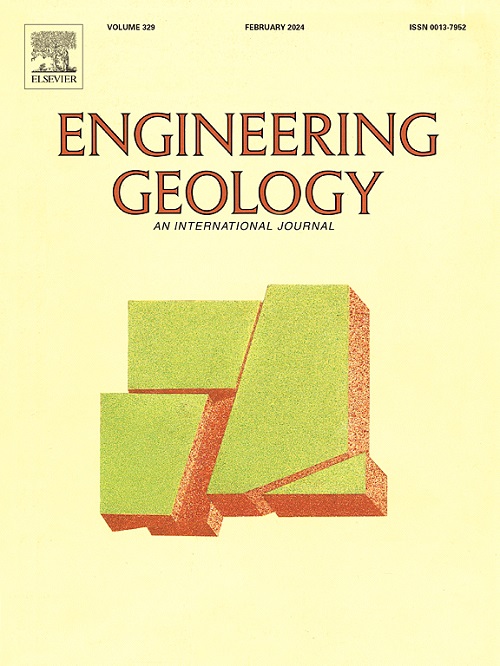考虑到岩土工程场地的相似性,通过分层贝叶斯方法,从极其稀少的实验数据中推导出特定场地土壤水特性曲线(SWCC)
IF 8.4
1区 工程技术
Q1 ENGINEERING, GEOLOGICAL
引用次数: 0
摘要
土壤水特征曲线(SWCC)在了解与水运动和土壤湿度效应相关的土壤行为方面起着至关重要的作用,是工程地质和岩土工程应用中不可或缺的工具。传统上,SWCC 是通过涉及不同吸力水平的劳动密集型实验室实验确定的,这一过程可能需要几个月的时间。此外,当设计和分析需要即时的现场特定数据时,从大量测量中获取高质量的 SWCC 就变得尤为困难。本文介绍了一种分层贝叶斯方法,该方法通过将有关站点的极其稀少的数据(例如一两次测量)与具有类似地质和沉积特征的站点的现有数据进行整合,得出特定站点的 SWCC。利用贝叶斯框架和马尔科夫链蒙特卡罗模拟估算 SWCC 参数。这种方法不仅能得出准确的 SWCC,还有助于量化相关的不确定性。利用非饱和土壤数据库(UNSODA)中不同类型黄土和非饱和土壤的数值数据和实际数据,证明了所提方法的有效性。结果表明,通过结合类似地点的信息,可以从稀疏的测量数据中准确估算出特定地点非饱和土壤的 SWCC。这项工作为岩土工程应用中推导非饱和土壤的 SWCC 提供了一种高效且相当准确的方法,尤其是在特定场地 SWCC 测量数量极其稀少和有限的情况下。本文章由计算机程序翻译,如有差异,请以英文原文为准。
Derivation of site-specific soil-water characteristic curve (SWCC) from extremely sparse experimental data by hierarchical Bayesian method with consideration of geotechnical sites similarity
Soil-water characteristic curves (SWCCs) play a crucial role in understanding soil behavior related to water movement and soil moisture effects, rendering them an essential tool in engineering geology and geotechnical engineering applications. Traditionally, SWCCs are determined through labor-intensive laboratory experiments involving varying levels of suction, a process that can take several months. Moreover, obtaining a high-quality SWCC from numerous measurements becomes particularly challenging when immediate site-specific data are required for design and analysis. This paper introduces a hierarchical Bayesian method for deriving site-specific SWCCs by integrating extremely sparse data (e.g., one or two measurements) for the site of interest with existing data from sites with similar geological and sedimentary characteristics. The SWCC parameters are estimated using a Bayesian framework and Markov chain Monte Carlo simulations. This approach not only enables the derivation of accurate SWCCs but also helps quantify the associated uncertainties. The effectiveness of the proposed method is demonstrated using both numerical and real-world data from different types of loess and unsaturated soils in the unsaturated soil database (UNSODA). The results show that site-specific SWCCs of unsaturated soils can be accurately estimated from sparse measurements by incorporating information from similar sites. This work offers an efficient and reasonably accurate approach for deriving SWCCs of unsaturated soils for geotechnical applications, especially when the number of site-specific SWCC measurement is extremely sparse and limited.
求助全文
通过发布文献求助,成功后即可免费获取论文全文。
去求助
来源期刊

Engineering Geology
地学-地球科学综合
CiteScore
13.70
自引率
12.20%
发文量
327
审稿时长
5.6 months
期刊介绍:
Engineering Geology, an international interdisciplinary journal, serves as a bridge between earth sciences and engineering, focusing on geological and geotechnical engineering. It welcomes studies with relevance to engineering, environmental concerns, and safety, catering to engineering geologists with backgrounds in geology or civil/mining engineering. Topics include applied geomorphology, structural geology, geophysics, geochemistry, environmental geology, hydrogeology, land use planning, natural hazards, remote sensing, soil and rock mechanics, and applied geotechnical engineering. The journal provides a platform for research at the intersection of geology and engineering disciplines.
 求助内容:
求助内容: 应助结果提醒方式:
应助结果提醒方式:


